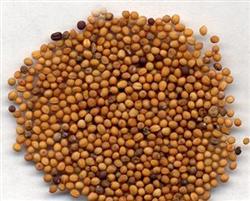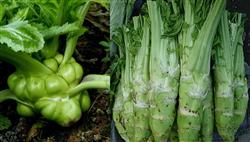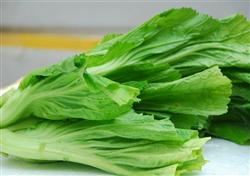Mustard planting: what should you pay attention to when planting mustard?

What should I pay attention to when growing mustard? The farming network summarizes three key points that need to be paid attention to in mustard cultivation for netizens' reference. Note 1. Sowing and raising seedlings: mustard is generally raised first and then planted. However, as a fast-growing cultivation, direct seeding is mostly used, and some seedlings are planted after transplanting. Mustard seeds are small, and the seedbed should be carefully arranged. Sow evenly, with 8 to 9 seeds per 10 square centimeters. Adequate base fertilizer should be applied before sowing. If there is no base fertilizer, 50%-60% of people's feces can be applied after sowing. It is necessary to sow more seeds in summer because of the high temperature. After sowing, cover the soil with a thickness of 0.5 cm, cover with a sunshade net to moisturize, and remove the seedlings after emergence. Seeds should be watered sooner or later before emergence. The seedlings began to grow to 2-3 true leaves, the distance between seedlings was 3.3-3.3 cm, and dilute human feces were applied. Second, cultivation density: the plant-row spacing of cultivation varies according to different varieties and cultivation seasons, generally 23-26cm, planting 7000- 9000 plants per mu. Pay attention to third, field management: if mustard planting in case of drought, should be irrigated to protect seedlings, the southern autumn and winter rainy weather, generally not suitable for irrigation, but also pay attention to drainage. Leaf mustard is fed by leaves, and nitrogen fertilizer should be used as the main fertilizer, but it should also be properly combined with phosphorus and potassium fertilizer to enhance resistance and increase yield, especially for leaf mustard with hypertrophic middle ribs and petioles as the main products. Generally, in addition to the application of calcium superphosphate 20 kg-30 kg / mu and plant ash 200 kg / mu, topdressing should be applied 3-4 times during the growing period, and 2-3 times from planting survival to product organ hypertrophy, from light to dense, about 20-30 kg / mu of urea. Ploughing and weeding was carried out before fertilization. Leaf mustard cultivated in early autumn should be fertilized in time because of its high temperature and rapid growth, especially for early-maturing varieties, and the heavy fertilizer application period for leaf mustard sown before and after White Dew should be between late October and early November. watering and fertilization should be stopped in the first half of the harvest to avoid excessive water content, enrich the tissue and improve the processing quality. Click to get more mustard planting techniques click to get more vegetable planting techniques
- Prev

Mustard planting: how to fertilize mustard for stem?
How to fertilize the stem with mustard? Is there anything you need to pay attention to? Ask experienced netizens to introduce the method of stem mustard (mustard) is a good crop for agricultural production in winter, but in production, it is found that once farmers transplant, do not pay attention to late topdressing, it will lead to low yield. Generally speaking, the production is 1000.
- Next

Mustard planting: how to grow mustard for leaves?
How to grow leaves with mustard? What should we pay attention to when growing leaves with mustard? Please introduce the planting methods of leaf mustard as follows: first, the choice of mustard cultivation season: leaf mustard is not resistant to heat and cold, so it is suitable for cultivation in cool and humid climate. Early broadcast can be at the end of August and early September, and evening broadcast can reach 9.
Related
- Where is it suitable to grow horseradish in China? it is expected to see the middle altitude horseradish in Alishan.
- How to prevent tomato virus disease reasonably? (Control methods included)
- Many people like to plant towel gourd on the balcony. What are the main points of this method and management?
- What crops can chili peppers be mixed with?
- Fertilization techniques and matters needing attention in Tomato
- What are the grafting techniques for peach seedlings in spring?
- Harm and control methods of root swelling disease of Chinese cabbage
- What are the pests of sweet potatoes? How to prevent and cure it?
- Symptoms, causes and Control methods of navel Rot in Tomato
- The cause of "Cucumber rotten bibcock" in Farmers' planting Cucumber and its Control Plan

